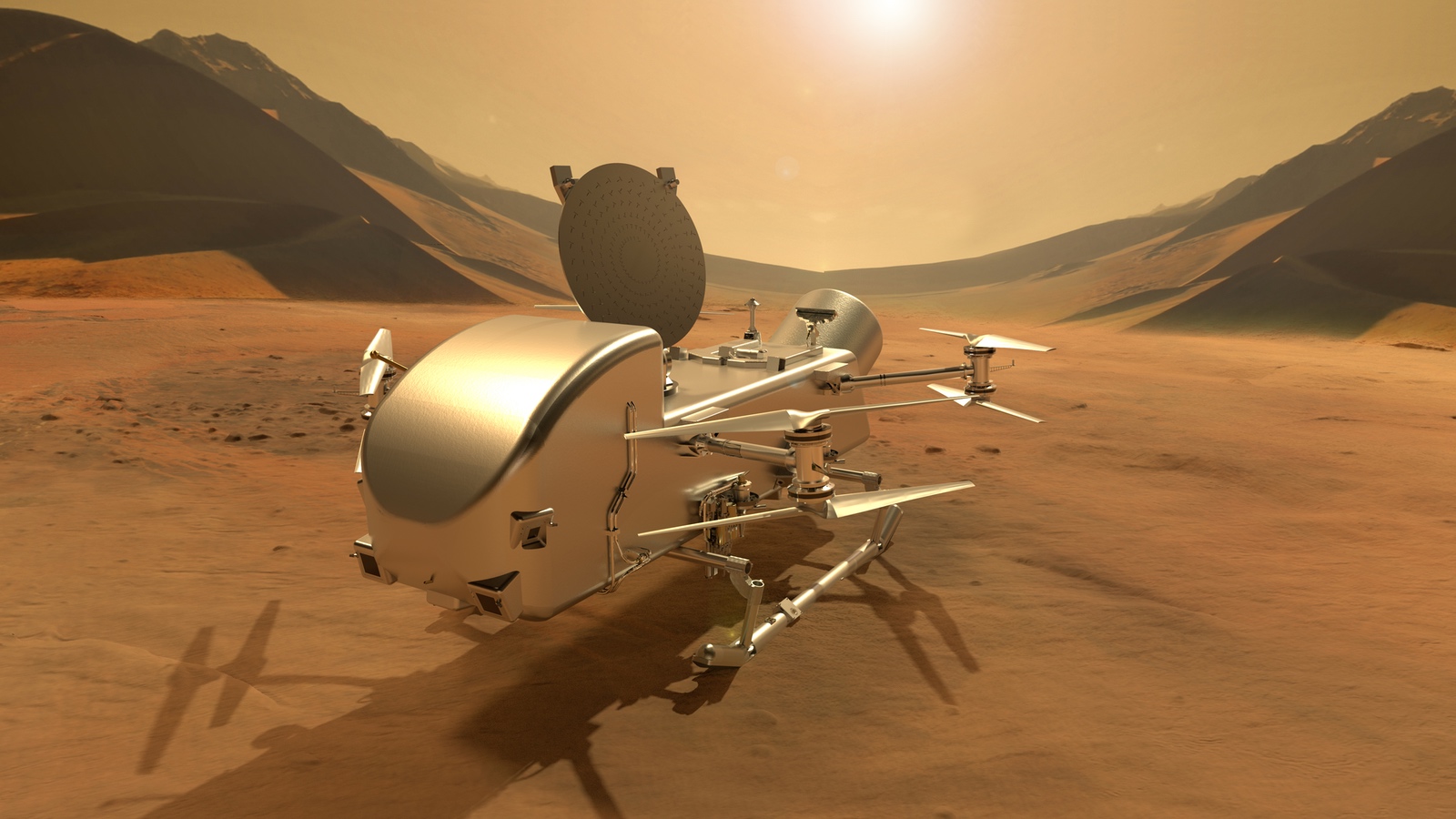WASHINGTON NASA has approved a mission to develop Saturn’s moon Titan, even though costs have doubled since the agency selected the mission nearly five years ago.
NASA announced on April 16 that the Dragonfly mission had passed the confirmation review. After review, the “Dragonfly” nuclear-powered rotorcraft will travel to various locations on Titan to study the habitability of the satellite, thus entering the comprehensive development stage.
The mission completed its partial confirmation review last fall, but the agency said in November that it would delay a final decision on the mission until the spring after the fiscal 2025 budget proposal is released. NASA also announced at the time that the mission originally scheduled for launch in July 2027 had been postponed by one year to July 2028.
The confirmation review gives NASA a formal commitment to the mission’s cost and timeline. NASA said it has confirmed that Dragonfly will be launched in July 2028, with a total mission cost of $3.35 billion.
This cost is much higher than what NASA approved in June 2019 when it selected Dragonfly as its latest “New Frontier” mission. At the time, the mission’s cost was capped at $850 million, and NASA designated it Phases A through D, which did not include launch and post-launch operations.
In its confirmation statement, NASA acknowledged that total life-cycle costs, including launch and operations, were twice as high as previous estimates. The agency blamed a variety of factors, including rescheduling due to budget constraints, pandemic impacts and supply chain challenges, and deep design iterations.
NASA said in a statement to SpaceNews on April 19 that the stated cost had doubled as the cost included in the original cap increased from $1 billion in real annual dollars (adjusted for inflation) to $2.1 billion.
In the three fiscal years since Dragonfly was selected, NASA set a cost cap for that year due to budget constraints. NASA says the cumulative impact of these early NASA-directed reschedulings and another rescheduling after the Preliminary Design Review (PDR) is responsible for nearly two-thirds of the cost increase in the AD phase.
NASA added that Project Dragonfly also underwent in-depth design iterations prior to PDR. The increase in costs, coupled with the increase in labor costs and parts and material costs due to the COVID-19 pandemic, is the balancing reason for the increase in costs in the AD stage.
These growth are evident in NASA’s fiscal year 2025 budget proposal. NASA has requested $434.6 million for the 2025 Dragonfly mission, while the agency’s 2024 budget request expected $355.5 million for the mission. NASA currently expects to spend $1.68 billion on Dragonfly from fiscal years 2025 to 2028, double the forecast for the same period in the 2024 proposal.
NASA also expects to invest more money in the Dragonfly launch. NASA said it will purchase a heavy-lift launch vehicle for the mission later this year, allowing Dragonfly to reach Titan in 2034. Two years since then.
Despite the cost challenges, they supported the mission. Nicola Fox, NASA’s deputy administrator for science, said in a statement about Dragonfly’s confirmation that “Dragonfly is a compelling science mission that has aroused widespread social interest. Take the next step. Exploring Titan will push the boundaries of what we can do with gyroplanes beyond Earth.
These cost increases, along with broader budget pressures facing NASA in general and its planetary science program in particular, are having an impact on future plans. Dragonfly is the fourth mission in the New Frontier series, following New Horizons, Juno and Osiris-Rex. NASA originally planned to issue a request for proposals for the fifth New Frontier mission in 2023, but has postponed it to no earlier than 2026.
The agency also warned that future missions in the Discovery family of planetary science missions could be delayed, with lower cost caps than New Frontiers, and a series of planetary small satellite missions called SIMPLEx. “We have very limited knobs that we can turn to address the budget,” Lori Glaze, director of NASA’s planetary science division, said during an April 15 town hall meeting about the delay in calls for future mission proposals. these short-term challenges.
Budget constraints also affect NASA’s ability to begin work on future flagship planetary science missions, the Uranus Orbiter and Atmosphere Explorer proposed by the recent Planetary Science Decadal Survey.
“In the current budget environment, we are unable to begin the research and activities we believe are needed to launch the mission,” Glaze said at the town hall. NASA had hoped to begin work on this this year or next. At the moment, the current funding situation does not appear to support this.
related
#NASA #confirms #Dragonfly #mission #doubling #cost
Image Source : spacenews.com
